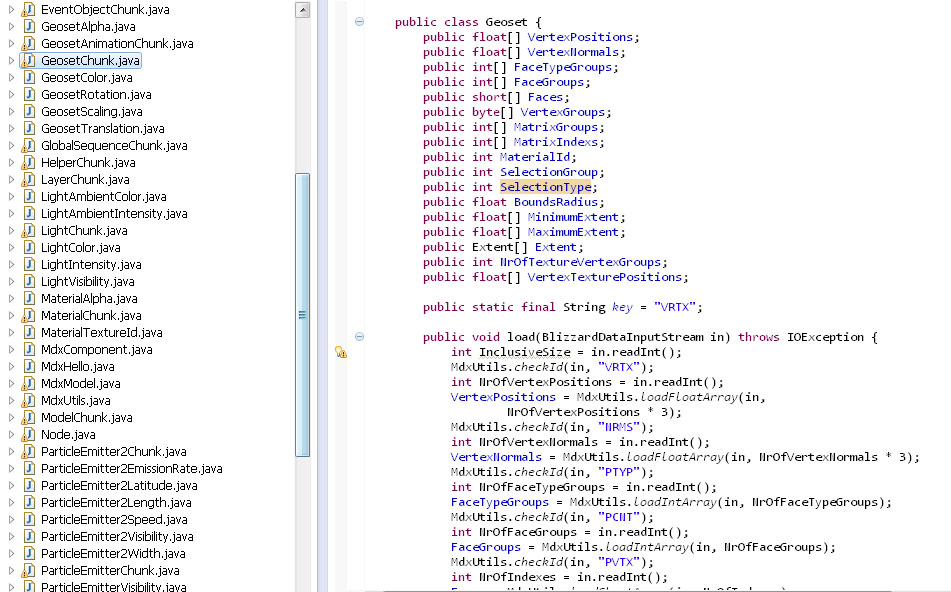- Joined
- Jul 24, 2006
- Messages
- 157
Java MDX lib + BLP
For my doodad merger I only had java classes for the basic mdx functions but now I parsed Magos complete Format definition http://www.wc3c.net/tools/specs/MagosMdxFormat.txt to java.
The result are 53 java classes for all the different data models can contain.

It can still contain mistakes but I tested it with some Heroes and Buildings and the saved output was identical with the input model.
Load a model
Save Model
Update
I moved the code the github and added features to write and load blp/tga files!
https://github.com/OgerLord/WcDataLibrary/
Download
Download Source (from github)
Credits go to magos for this format desciription and to gexxo for the Blizzard streams.
For my doodad merger I only had java classes for the basic mdx functions but now I parsed Magos complete Format definition http://www.wc3c.net/tools/specs/MagosMdxFormat.txt to java.
The result are 53 java classes for all the different data models can contain.
It can still contain mistakes but I tested it with some Heroes and Buildings and the saved output was identical with the input model.
Load a model
Code:
BlizzardDataInputStream in = new BlizzardDataInputStream(new FileInputStream(inputFile));
MdxModel model = StreamUtils.loadModel(in);Save Model
Code:
BlizzardDataOutputStream out = new BlizzardDataOutputStream(outputFile);
model.save(out);
out.close();Update
I moved the code the github and added features to write and load blp/tga files!
https://github.com/OgerLord/WcDataLibrary/
Download
Download Source (from github)
Credits go to magos for this format desciription and to gexxo for the Blizzard streams.
Attachments
Last edited:









 .
.







